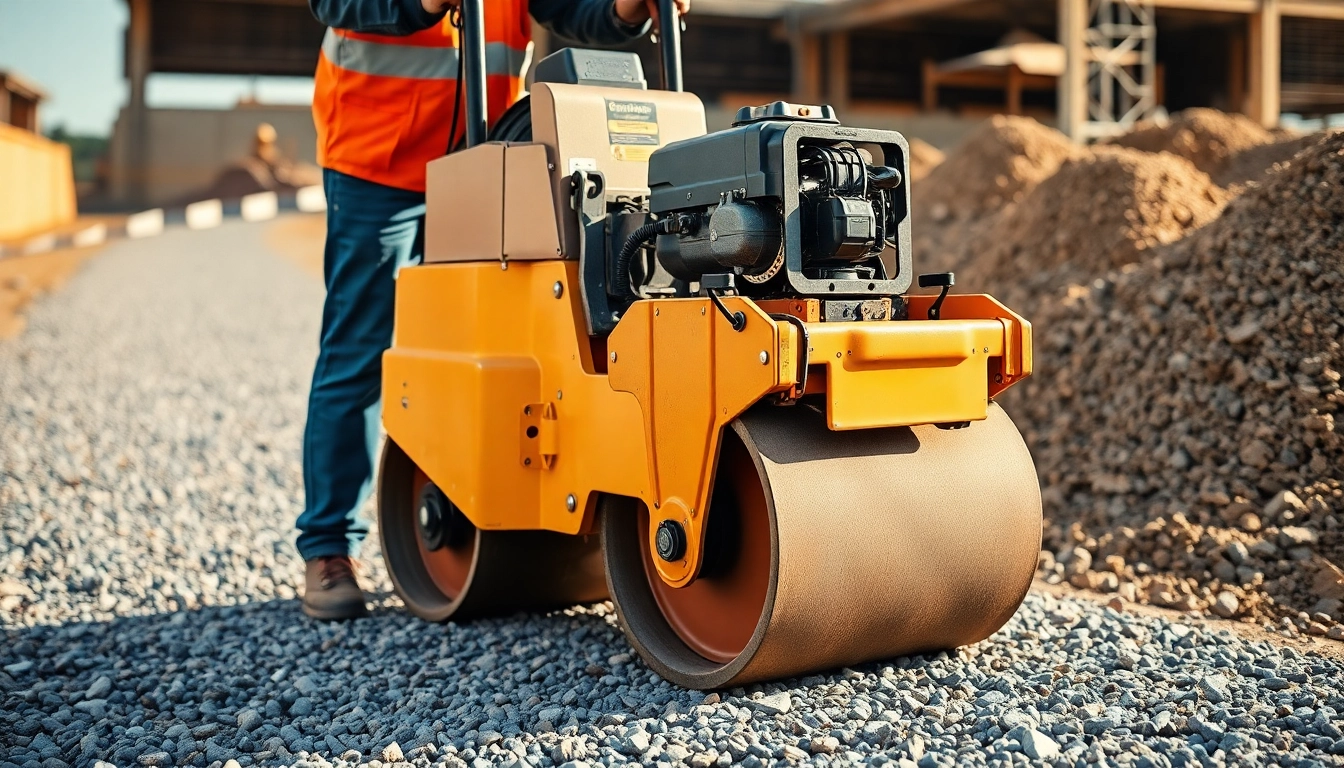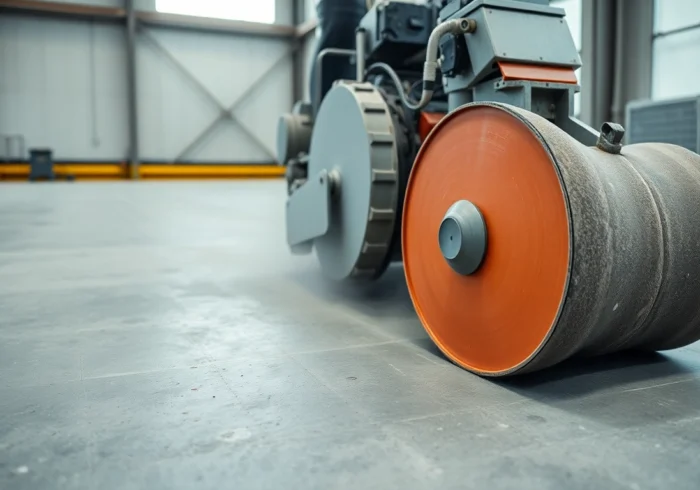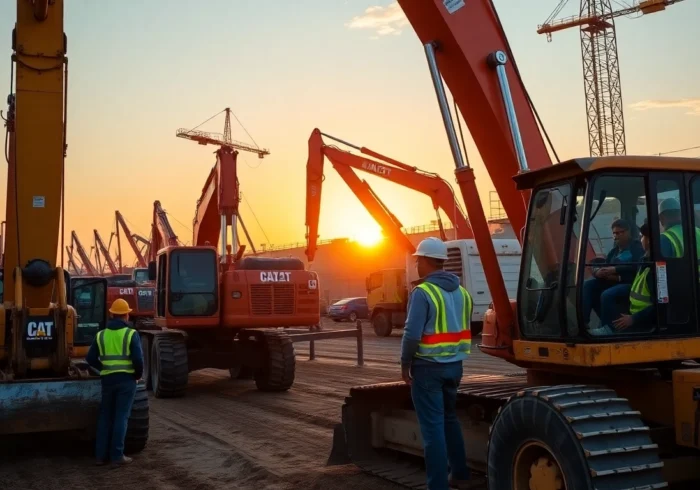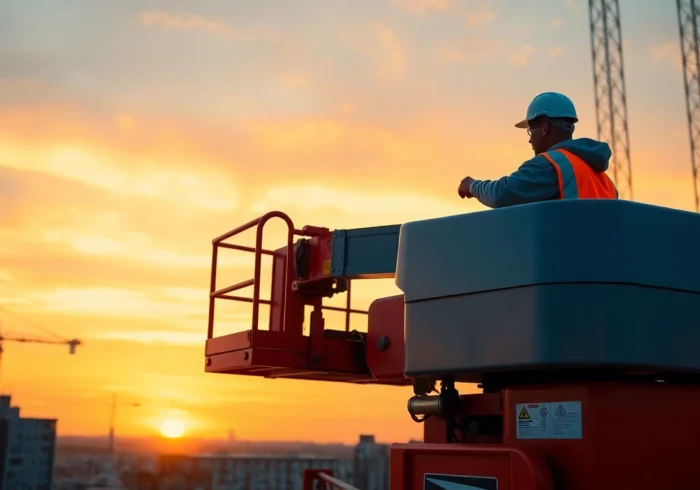Understanding the Benefits of Compactors Rental for Construction Projects
In construction and landscaping industries, achieving a stable, well-compacted base is fundamental to ensuring the longevity and safety of any project. From laying foundations to preparing surfaces for paving or landscaping, proper soil compaction is crucial. While investing in compacting equipment might seem appealing for large-scale operations, it often proves more cost-effective and flexible to rent these machines on a project-by-project basis. Compactors rental offers numerous advantages, particularly for small to medium-sized projects or temporary tasks, allowing businesses to optimize costs without compromising on quality or performance. This section explores how renting compactors can significantly benefit your construction projects, saving both time and money while ensuring the best possible outcomes.
Why Renting Compacting Equipment Saves Time and Cost
One of the main advantages of renting compactors is the ability to access modern, well-maintained machinery without the significant upfront investment of purchase. Purchasing equipment entails high capital costs, maintenance, storage, and depreciation—expenses that can strain budgets, especially for short-term projects. Renting allows flexible use of the latest models, ensuring optimal efficiency and performance.
Moreover, rental companies provide expert advice on selecting the right compactors for specific projects, reducing downtime caused by equipment mismatches. Quick delivery and pick-up services mean that construction schedules are less likely to be delayed due to equipment shortages or breakdowns. When considering the total cost of ownership versus renting, the latter often results in substantial savings, particularly when factoring in maintenance, repairs, and storage costs.
For instance, a small construction firm might rent a vibratory plate compactor for a few days instead of making a full purchase, saving hundreds of pounds while ensuring they utilize the most efficient equipment for their specific site conditions.
Types of Compacting Machines Available for Rent
The diversity of compactors available for rent accommodates a wide array of construction needs. Understanding the types of machines and their applications is vital to making an informed rental choice.
- Plate Compactors (Wacker Plates): These are the most common compactors used to prepare small to medium-sized surfaces. They include vibrating and forward/reverse models, suitable for soil, gravel, and asphalt.
- Rumbling Rollers: Larger than plate compactors, these are ideal for compacting granular soils, asphalts, and large industrial surfaces. They provide a higher compaction density over extensive areas.
- Vibrating Rollers: Used mainly for road construction, these rollers efficiently handle deep compaction tasks for highways or airport runways.
- Trench Rammers: Designed to compact in confined spaces such as trenches and narrow areas, these handheld units deliver high-impact force essential for deep compaction.
Each type serves a specific purpose, and selecting the correct one depends on your project’s size, material, and surface conditions. Rental companies often supply a range of options, enabling site managers to tailor equipment use precisely to their needs.
Key Features to Consider When Choosing a Compactor
Choosing the right compactor involves evaluating several features to match the machine’s capabilities with your project requirements:
- Vibration Amplitude and Frequency: Higher amplitudes promote better soil compaction but may require more power and cause higher noise levels. Consider your site’s sensitivity to noise and vibration.
- Engine Power and Fuel Type: Petrol, diesel, and electric options are available. Diesel-powered units tend to deliver higher power outputs suitable for heavy-duty tasks, while electric models are quieter and environmentally friendly.
- Plate Size and Weight: Larger plates cover more area but are heavier and less maneuverable. Lighter, smaller plates are ideal for tight spaces and detailed work.
- Ease of Operation and Ergonomics: Modern compactors come with user-friendly controls, vibration dampening for operator comfort, and mobility features such as wheels or handles.
- Durability and Maintenance Requirements: Selecting reputable brands and models with robust construction reduces downtime and repair costs during rental periods.
Understanding these features helps ensure you select the most efficient equipment, tailored to your project’s conditions and environment, leading to consistent, high-quality results.
Best Practices for Safe and Effective Compactors Operation
Preparing Your Site for Optimal Compaction
Proper site preparation is fundamental to maximize the efficiency of your rented compactors and to prevent equipment damage or accidents. This process includes clearing debris, ensuring proper moisture content in the soil, and marking the areas designated for compaction.
Ensure the ground is free from large rocks, organic matter, and standing water, which can impede the compaction process. Testing soil moisture levels is advisable—moist soils usually compact better than dry or overly wet soils. Slightly moist conditions improve cohesion but avoid excess water, which can cause instability.
For complex or large projects, performing a preliminary test compaction on a small area helps determine the optimal number of passes and moisture adjustments needed for the entire site.
Proper Handling and Usage Techniques
Operator training and adherence to safety protocols are essential for effective use of compactors. Here are key operational tips:
- Positioning: Always position the machine to cover the maximum area with each pass, overlapping edges slightly for uniform results.
- Passes: Use multiple light passes rather than a few heavy passes, minimizing soil displacement and achieving even compaction.
- Footing and Balance: Maintain a firm stance and control handle, especially when operating vibrating or forward/reverse models, to prevent slips.
- Speed Control: Operate at a steady, controlled pace, avoiding rapid or jerky movements that can compromise compaction quality.
- Vibration Monitoring: Pay attention to machine vibrations and noise; excessive vibrations might indicate operational issues needing maintenance.
Following these techniques ensures safety and enhances the quality of your soil compaction, leading to more durable foundations and pavement layers.
Maintenance and Inspection Tips During Rental Period
Routine maintenance during the rental period prolongs equipment lifespan and maintains optimal performance. Essential practices include:
- Daily Inspection: Check for fluid leaks, loose bolts, and damaged parts before use each day.
- Cleaning: Remove dirt, debris, and excess mud from the machine to prevent clogging and corrosion.
- Lubrication: Follow manufacturer guidelines for lubricating moving parts, ensuring smooth operation.
- Operational Checks: Confirm that vibration amplitude, engine function, and safety features are functioning correctly before each use.
- Reporting Issues: Notify your rental provider immediately if you notice any abnormal operation or damage to facilitate repairs or exchanges.
Adopting proactive maintenance practices reduces downtime, prevents costly repairs, and assures safety compliance on-site.
Step-by-Step Guide to Renting the Right Compactor
Assessing Your Project’s Soil and Material Needs
The initial step involves evaluating the specific requirements of your project. Consider soil type—clayey, sandy, silty, or gravelly soils all respond differently to compaction. For example, cohesive soils like clay need to be moist and may require higher amplitude, while granular soils like gravel benefit from higher pressure and larger rollers.
Determine the extent of the area, depth of compaction, and the type of surface—whether soil, asphalt, or other materials. This assessment ensures you select equipment capable of delivering the desired compaction levels efficiently. Consulting geotechnical experts can often provide valuable insights, especially for critical structural foundations.
Selecting the Appropriate Size and Power
Size and power matchmaking are vital for effective and safe operations. Smaller plates (around 300-400mm width) are suitable for confined spaces and detailed work, whereas larger plates or rolling compactors handle expansive areas swiftly.
Power considerations include engine size and vibration capability. More powerful units can handle tougher soils and deeper compaction, but they may be heavier and require more control. Balancing size, power, and site conditions ensures optimal performance and operator safety.
Compare rental options based on model specifications, available features, and user reviews to identify the best fit for your project scope.
Scheduling and Coordinating Equipment Delivery
Effective planning is crucial for minimizing delays. Coordinate with your rental supplier to arrange timely delivery aligned with your project schedule. Providing precise site location details, access routes, and operational requirements helps prevent mishaps.
Consider scheduling equipment pickup immediately after project completion to avoid storage issues or rental overages. If your project involves multiple phases, plan for staggered rentals to ensure availability and cost efficiency.
Some rental companies offer flexible rental periods, including short-term weekend hires and long-term leasing, accommodating diverse project timelines.
Top Performance Metrics and Results from Using Rented Compactors
Measuring Ground Stability and Durability
Post-compaction assessments include testing soil density, moisture content, and stability. Standard methods like the Proctor test or nuclear density testing provide precise measurements ensuring compliance with engineering specifications.
Consistent testing throughout the process helps identify areas requiring further compaction, reducing the risk of future ground failure.
Reducing Project Timeframes with Quality Equipment
High-performance rented compactors enable faster progress by increasing coverage and achieving uniform compaction in fewer passes. Modern machines feature ergonomic controls, adjustable settings, and high vibration outputs that expedite the process, especially on large projects.
This acceleration leads to earlier project completion, enabling subsequent phases such as paving or structure erection to commence sooner—ultimately saving costly project delays.
Cost Savings Analysis and ROI for Construction Teams
Investing in high-quality rented compactors often results in significant cost savings over purchasing equipment. Fewer passes, improved ground quality, and reduced rework contribute to lower labor and material costs.
Additionally, accurate compaction minimizes future structural issues, decreasing maintenance and repair expenses. The return on investment is heightened when multiple projects utilize the same premium equipment within a rental period, maximizing utilization rates.
Enhancing Your Construction Site with the Right Compacting Equipment
Innovative Features in Modern Compactors
Recent advancements in compactor technology have significantly improved performance and operator comfort. Features include:
- Adjustable Vibration Settings: Allow customization based on soil type, reducing damage and increasing efficiency.
- Eco-friendly Engines: Reduce emissions and fuel consumption, aligning with sustainability goals.
- Ergonomic Design: Vibration-dampened handles and controls decrease operator fatigue.
- Smart Technology Integration: Some models include sensors and digital displays for real-time monitoring of compaction parameters.
These features contribute to safer, more efficient, and environmentally conscious construction practices.
How Compactors Improve Soil and Gravel Stability
Proper compaction enhances soil stability by reducing voids and increasing load-bearing capacity. For gravel, it prevents settlement and erosion, ensuring long-term surface integrity.
Optimized compaction results in:
- Reduced potential for uneven settling or cracking
- Enhanced load distribution for pavements and foundations
- Increased resistance to water infiltration and corrosion
Overall, selecting appropriate compaction equipment and techniques directly influences the durability and performance of the constructed surface.
Customer Success Stories and Case Studies
Many construction companies have experienced measurable benefits from renting high-quality compactors:
- Case Study 1: A landscaping firm in Manchester rented a plate compactor to prepare a large patio foundation. The project was completed 20% faster than scheduled, with excellent soil stability achieved on the first attempt.
- Case Study 2: A road contractor in Birmingham utilized a vibrating roller for an asphalt overlay, reducing compaction time by half and lowering fuel consumption due to advanced engine features.
These examples demonstrate how the right equipment, rented from reliable suppliers, translates into higher efficiency, better quality, and increased client satisfaction.



